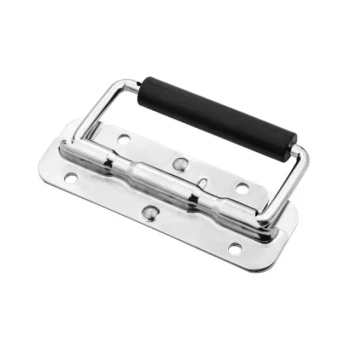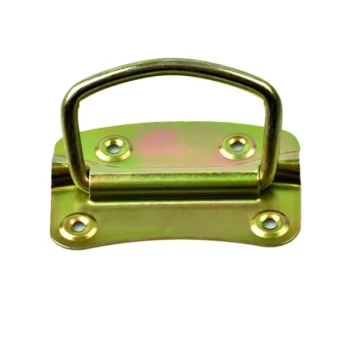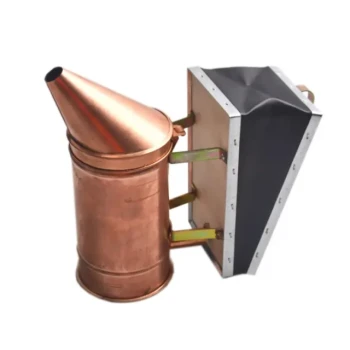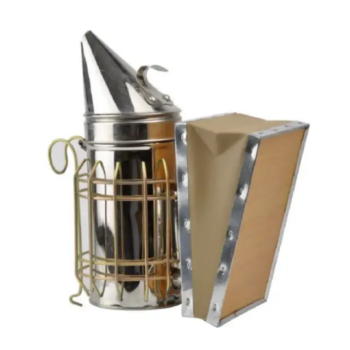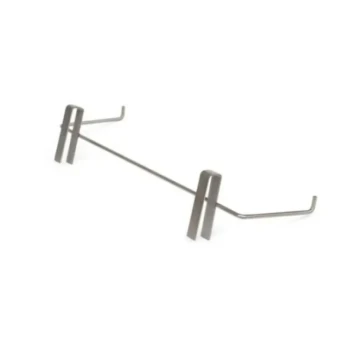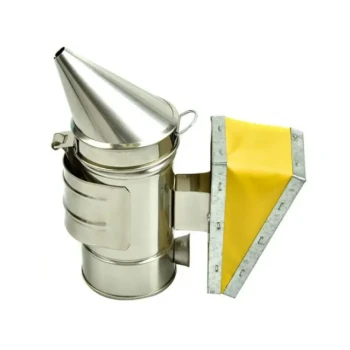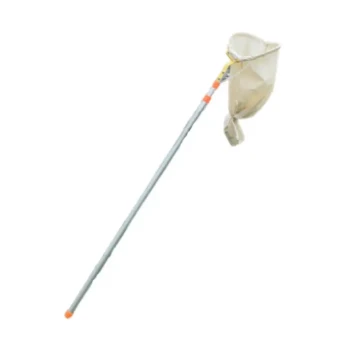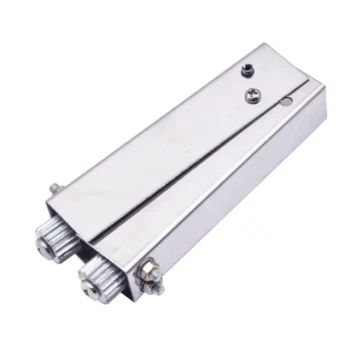In practice, no. While wearing full protective gear dramatically reduces your chances of being stung, it is unrealistic to expect to be a beekeeper for any length of time and never receive a single sting. The reality of beekeeping is that occasional stings are a manageable and accepted part of the process.
The goal for a successful beekeeper is not absolute sting avoidance, but rather sting mitigation. By understanding bee behavior and using the right techniques, you can transform stings from a common fear into a rare, manageable event.

The Pillars of Sting Mitigation
Successfully managing stings relies on a multi-layered approach. It's a combination of the right equipment, the right tools, and the right mindset. When these elements work together, the risk becomes minimal.
Protective Gear: Your First Line of Defense
Your primary protection is a well-maintained bee suit. A full suit, veil, and gloves create a physical barrier that bees cannot penetrate.
Pay close attention to the connection points. Ensure your suit overlaps properly with your boots and gloves, as these are the most common areas for a determined bee to find an entry.
The Smoker: Your Tool for Calm Communication
A smoker is not for subduing bees with force; it's a communication tool. The cool, white smoke masks the alarm pheromones that bees release when they feel threatened.
When one bee stings, it releases a signal that encourages other bees to attack the same spot. The smoker interrupts this signal, preventing a single sting from escalating into a larger defensive event.
Bee Genetics: Starting with a Gentle Colony
The temperament of a honeybee colony is largely determined by its queen. Modern beekeeping heavily favors commercially reared queens bred specifically for gentle dispositions.
Starting with a colony known for its calm demeanor is one of the most effective long-term strategies for reducing defensive behavior and, consequently, stings.
Your Demeanor: The Beekeeper's Influence
Bees respond to their environment. Calm, slow, and deliberate movements are far less likely to trigger a defensive response than quick, jerky motions.
Avoid standing directly in front of the hive entrance, as this blocks the bees' flight path and can be perceived as a threat. Work from the side or the back of the hive whenever possible.
Understanding the Trade-offs
Becoming an effective beekeeper means understanding the practical compromises you will face. Absolute safety is often balanced against efficiency and dexterity.
Protection vs. Dexterity
Most stings on the hands occur when a beekeeper chooses to work without gloves. While gloves offer maximum protection, they are cumbersome and reduce your ability to feel the frames.
Many experienced beekeepers accept the occasional hand sting as a trade-off for being able to manipulate frames more delicately, reducing the risk of dropping a frame or crushing bees, which would provoke a much larger defensive response.
The Reality of Accidents
Even with full gear and a gentle colony, accidents happen. You might inadvertently pinch a bee between frames or a bee could find a tiny, unforeseen gap in your suit.
These isolated incidents are the most common source of stings for well-prepared beekeepers. It is not a failure of your technique, but a simple reality of working with thousands of living creatures.
When a Sting Occurs
If you are stung, the key is to remove the stinger quickly by scraping it out with a fingernail or hive tool. Do not pinch it, as this can inject more venom.
Applying a topical ointment can help alleviate the immediate pain and subsequent itching. Moving away from the hive and applying a puff of smoke to the sting location can also help mask the alarm pheromone.
Making the Right Choice for Your Goal
Your approach to sting management should align with your personal comfort level and beekeeping goals.
- If your primary focus is maximum safety: Always wear a full suit with gloves and boots, ensuring all seams and connections are secure before every inspection.
- If your primary focus is developing proficiency: Begin with full gear and, only as you gain confidence, consider experimenting with thinner gloves or no gloves to improve your dexterity.
- If your primary focus is deciding if beekeeping is for you: Seek out a local beekeeping association or mentor to participate in a hive inspection while fully protected before you invest in equipment.
Ultimately, managing stings becomes less about fear and more about a skillful, respectful partnership with your hives.
Summary Table:
| Sting Mitigation Strategy | Key Benefit |
|---|---|
| Protective Gear (Suit, Veil, Gloves) | Creates a physical barrier against stings |
| Using a Smoker | Masks alarm pheromones to prevent defensive swarms |
| Choosing Gentle Bee Genetics | Reduces colony aggression from the start |
| Calm Beekeeper Demeanor | Slow, deliberate movements avoid provoking bees |
| Proper Sting Response | Scrape—don't pinch—the stinger to limit venom |
Ready to manage your apiary with confidence and minimize stings? HONESTBEE supplies commercial apiaries and beekeeping equipment distributors with the durable, high-quality protective gear and tools—like reliable smokers and gentle bee genetics—that form the foundation of effective sting mitigation. Let us help you build a safer, more productive beekeeping operation. Contact our wholesale experts today to discuss your specific needs!
Visual Guide

Related Products
- Cotton Beekeeping Suit and Round Hat with Veil Bee Keeper Protective Gear
- White Beekeeping Protective Suit and Hat with Fencing Veil for Beekeepers
- Professional Beekeeping Suit for Kids and Girls Childrens Bee Keeper Suit
- Heavy Duty Cowboy Beekeeper Hat with Visibility Veil Outdoor Professional Beekeeping Protective Gear
- Beekeeper Cowboy Hat and Veil for Beekeeping
People Also Ask
- What factors should be considered when choosing a beekeeping suit? Balance Safety, Comfort & Performance
- How should a bee suit be cleaned? Protect Your Investment and Ensure Apiary Safety
- What are bee suits made of? Choosing the Right Material for Maximum Protection & Comfort
- What are the benefits of a fully ventilated beekeeping suit? Stay Cool and Protected in Hot Climates
- What should be considered regarding the color of beekeeping clothing? Ensure Your Safety and Keep Bees Calm





